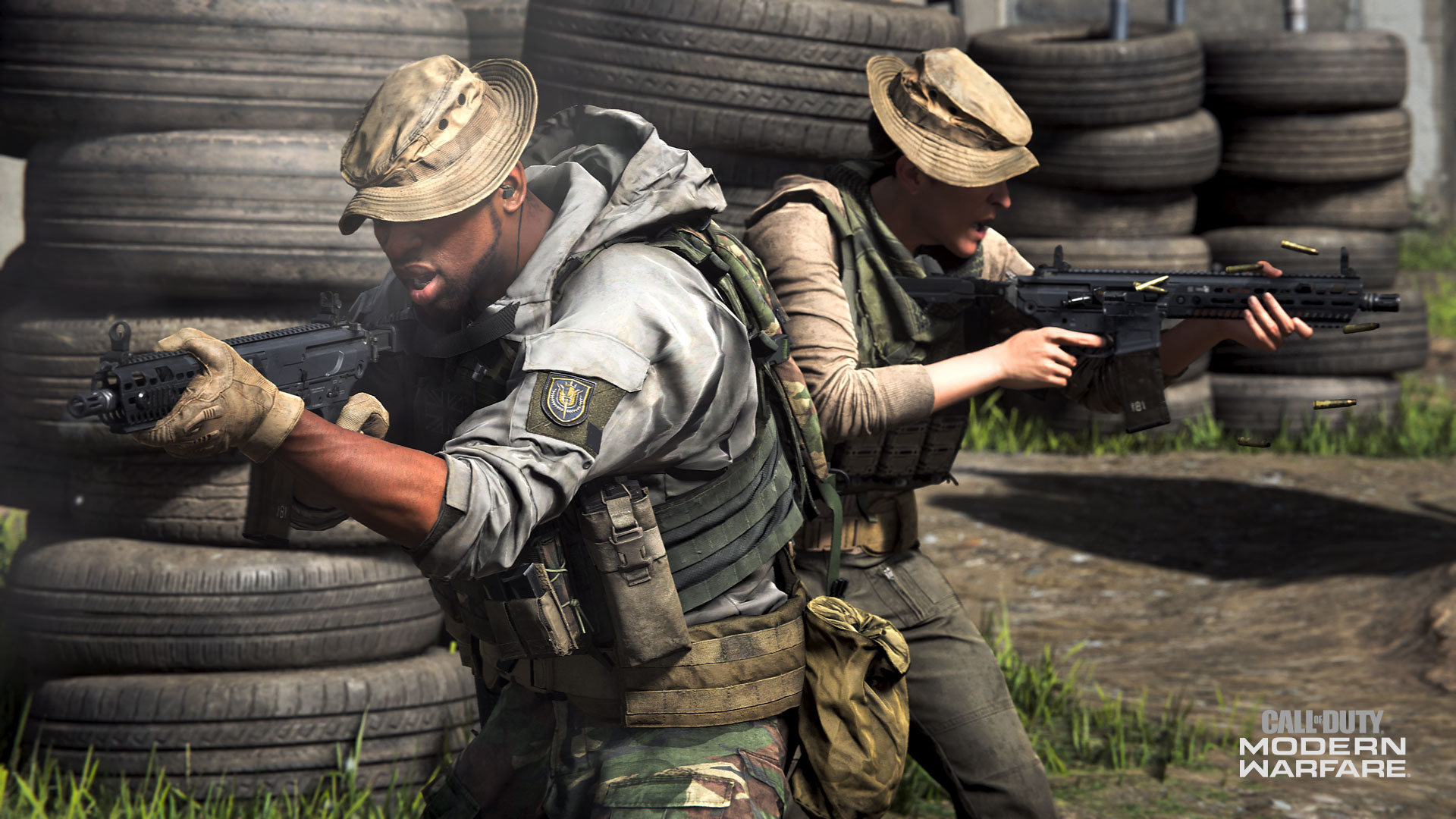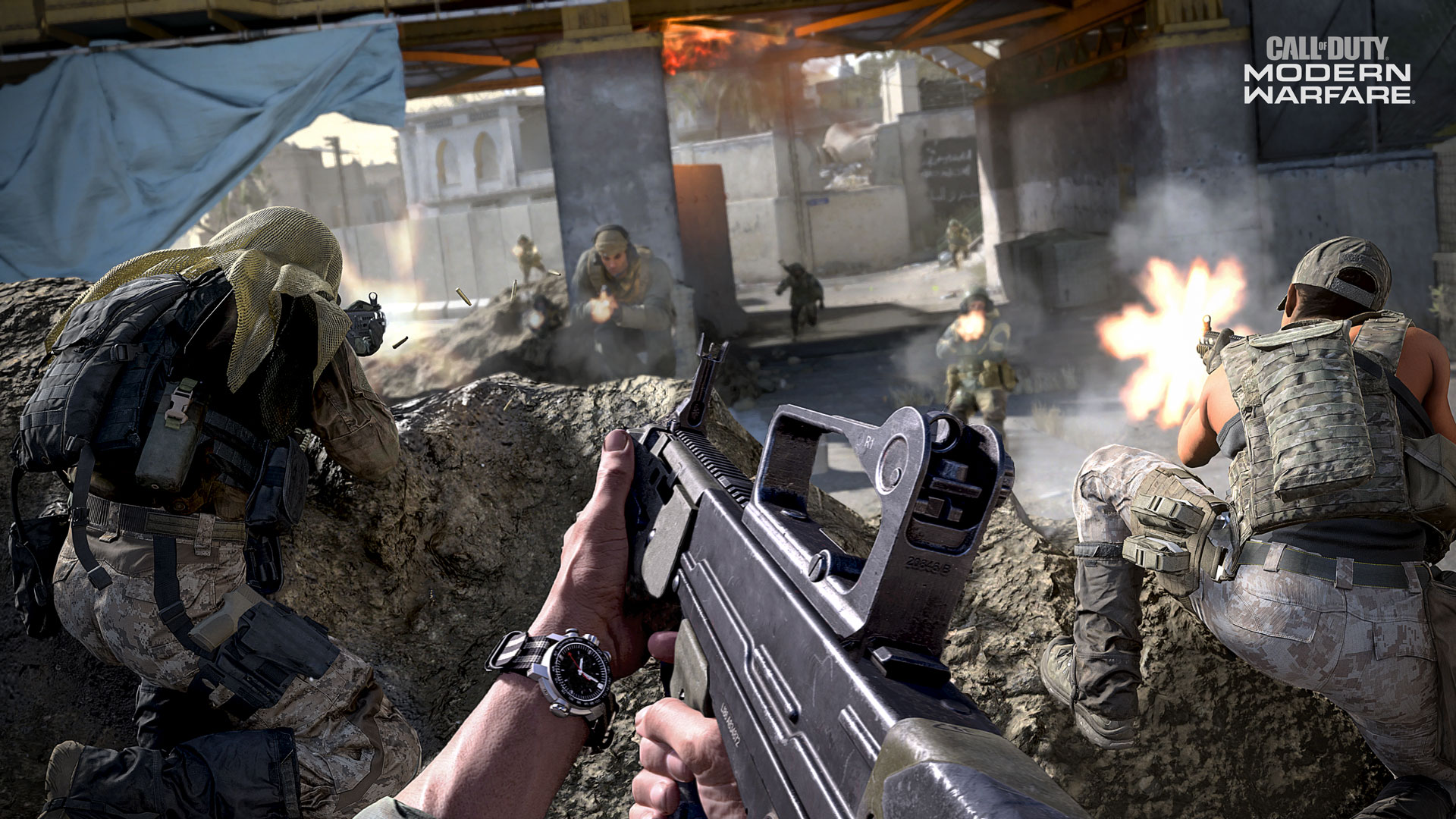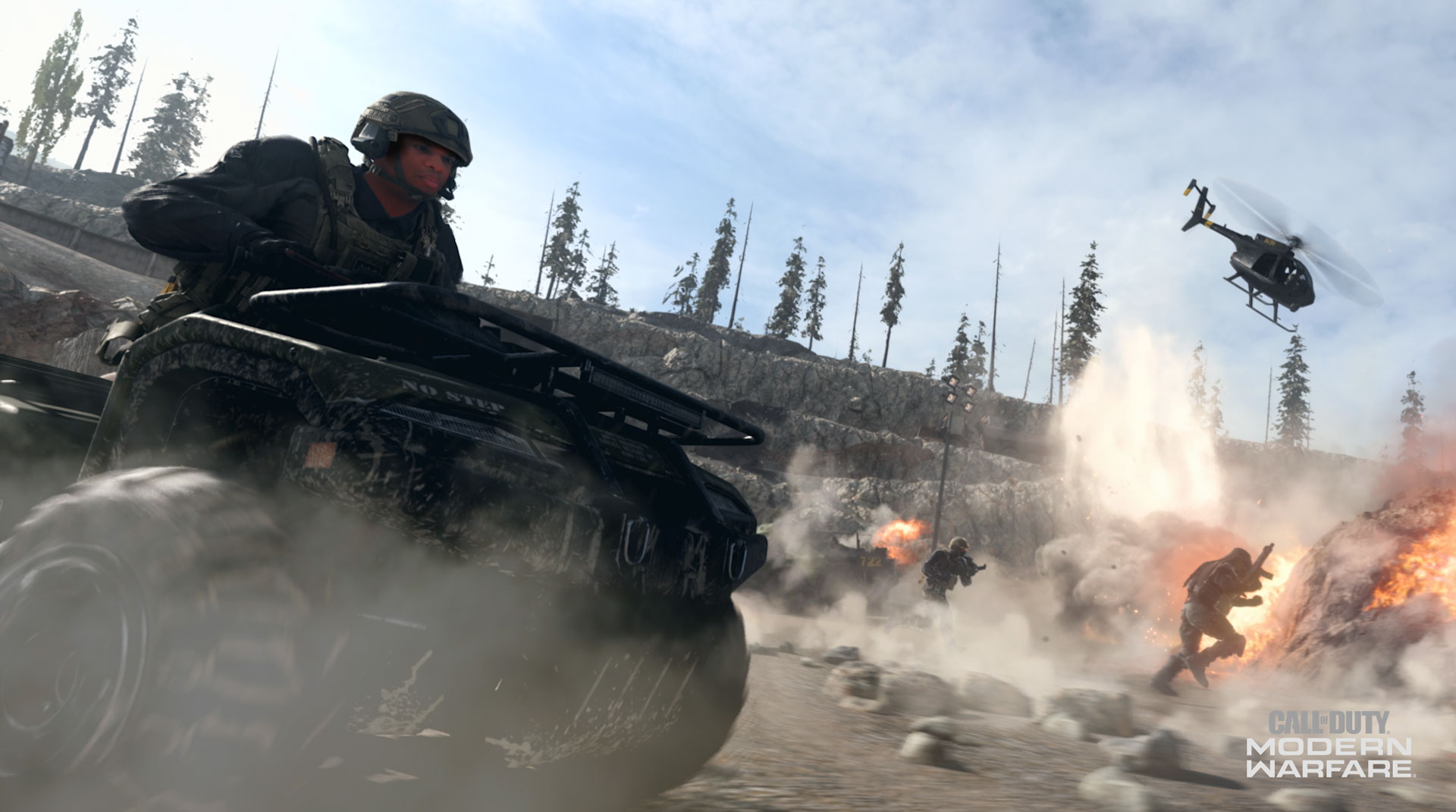Before you learn to run, you must learn to walk.
Learning how to move in Modern Warfare may seem like too basic of a guide, but games can be won or lost through misunderstanding even the simplest movement commands. In a game with split-second engagements, knowing when to run – and when not to – could be the difference between victory and defeat. Or knowing what your ideal sensitivity is for looking around could be key to elevating your game.
For our first basics guide for Call of Duty: Modern Warfare, we’re covering the fundamentals: how to move and look around. And whether this is your first video game – don’t worry, we all start somewhere – or you are a seasoned veteran, there may be something you will learn through this extensive guide on controlling movement and sight in-game:
(For the purpose of all basics guides, all commands will reference those on a PlayStation® 4 controller, so translate these guides according to your platform of choice).
You’re Now Free to Move About the Combat Zone
Standing
Are you not touching anything on your controller? Then that means your Operator is standing in the game.
Okay, why is this important to point out?
In any scenario, being stationary allows you to potentially fire a weapon more accurately, as a weapon will be less accurate when fired on-the-move than when it is fired while not moving. So, when you walk right into an engagement, consider stopping to get a better chance at hitting those first few shots on an enemy.
Standing still can also leave you vulnerable to attacks whether in an active engagement or scoping out an enemy. So, consider standing still during engagements where the enemy can’t see you or when landing shots on target is more important than evading bullets.
Accuracy while standing is the baseline accuracy for any weapon, so consider that when choosing between weapons for a loadout.
Walking
This is the most basic movement command in-game; pushing the left stick in any direction will move your Operator in that direction. This does not change where your Operator is looking which is a separate control.
Walking offers a minimal movement penalty while firing a weapon and produces the standard amount of noise while moving for an Operator.
As the “average” movement speed, it may not seem like walking has its uses, yet the minimal movement penalty to accuracy can come in handy during an engagement. Plus, in scenarios where stealth and speed are both needed, this offers a great middle ground within the range of movement options.
Sprinting
Pushing in the left stick (L3) while moving in a direction will cause your Operator to break into a sprint.
With this boost in speed comes three drawbacks: it amplifies footsteps, slows aim down sight (ADS) speed, and you are unable to use weapons while sprinting.
Also, unless you have the Dead Silence Field Upgrade activated, sprinting will louden your Operator’s footsteps. For an enemy who pays attention to in-game acoustics sprinting could give away your location, so sprinting behind enemy lines may not be the best idea when trying to avoid confrontation.
Conversely, you could use this knowledge to your own advantage in-game; turn up those headphones (to a reasonable volume, of course) and pay attention to where sprinting footsteps are coming from to potentially catch an enemy by surprise.
Next, the slowed ADS speed means that, when you do want to use a weapon immediately after a sprint, aiming down sights will take more time than aiming down sights while standing or walking. There are a few attachments, such as a Lightweight Stock, that can mitigate this penalty, but in most cases, sprinting to ADS takes more time than nearly every other movement type to ADS.
Tactical Sprinting
Tactical sprint is an even faster sprint; a short burst of speed that sees your Operator use all their energy to rush forward. To tactical sprint, click L3 twice and hold forward.
Outside of vehicles, tactical sprinting is the fastest way of moving, but you are unable to aim down sights without losing this sprint and only have one tactical sprint per life.
During a tactical sprint, your Operator holds a held weapon towards the sky, making it even slower to ready that weapon for firing when you stop sprinting. Furthermore, unless it is refreshed by way of a perk or Field Upgrade, you are only given one tactical sprint per life. In other words, make it count… But how?
Consider using your tactical sprint in the very beginning of a game to potentially beat an enemy to an objective. Or, use your best judgement in deciding when that extra speed boost is absolutely necessary, even if it is long after spawning in on a map.
Crouch Walking
Think of crouching as the inverse of sprinting; by crouching, you are sacrificing speed for the sake of accuracy, a lower profile, and softer movement acoustics.
To crouch, press the O (circle) on your controller. To get out of a crouch, press that button again.
In a crouch, your Operator gets an accuracy boost and recoil reduction bonus. This may be great when using a weapon with a wilder recoil pattern, such as a submachine gun (SMG), or any weapon in general, as being able to accurately place that first shot can help lead to victory in any engagement.
Crouching also softens the sound of footsteps, allowing for stealthier movement across the map. Whether you are behind enemy lines or trying to move closer to an objective, crouch walking could be a viable solution to having some speed while still being stealthy.
The other benefit to crouching is how it physically lowers an Operator’s profile, allowing them to potentially take better cover behind objects. A well-timed crouch could also foil an enemy’s attempt to get a headshot in the middle of a gunfight, which could offer a few split-seconds of an advantage while they re-adjust their aim.
Going Prone
The final basic movement technique is going prone, which is done by holding down the O (circle) on your controller.
Going prone allows for precision accuracy with weapons, the softest movement volume and the lowest profile, but at the cost of the slowest movement speed.
Firing a weapon while prone offers the most recoil mitigation and accuracy buff out of all movement stances. This benefit may be great for picking off enemies at long distances, as your Operator will use the ground to offer more stability even while using the highest magnification optics.
Going prone also drops your movement volume down to its lowest levels. This movement type may be perfect for those attempting a ninja defuse on a bomb in Cyber Attack, as an undisciplined enemy team may not expect someone to shimmy up to the objective.
Shimmying is actually the best way to describe the movement speed while prone; however, moving while prone might be painfully slow, which may make this movement technique only viable in situations where covering long distances isn’t needed. Dropping to prone in the middle of an engagement can also work, as an enemy will most likely have to adjust their aim to an extreme degree to continue landing shots on target.
One additional minor benefit to going prone, and in some cases crouching, is the ability to fit into tighter spaces for potential shortcuts. There are a few routes on some Multiplayer maps that can only be taken while in a prone or a crouch position, which could be unique ways to tackle an objective or flank around an enemy team.
Sliding
All the above movement types only require a button press to activate – or even none at all – but sliding is a bit trickier. To slide, hold O (circle) while sprinting. This will have your Operator perform a slide, allowing you to cover a short amount of distance and lower your profile.
Sliding offers a short movement boost and an irregular movement pattern that gives you a lower profile along with accuracy and recoil buffs.
For this reason, sliding could be a great way to end a sprint, as it could throw off an enemy who expects to face-off against another Operator at eye level. Learning how to slide effectively may take time, but when you do master the slide it could be very helpful to your gameplay.
For those that wish to tweak their settings, the slide action can be adjust from ‘hold to slide’ to ‘tap to slide’ in Settings. Depending on how often you use this movement mechanic, the hold to tap adjustment might be worth it.
Leaps and Bounds
Jumping
Pressing the cross button will make your Operator jump, with the height of your jump progressively getting shorter if this command is executed multiple times in short succession.
Jumping could be necessary to get across short gaps in order to access unique routes across the map, and otherwise is a potential way to throw off enemy fire.
Take Hackney Yard; it’s possible to not touch the ground through most of the map by hopping across ledges, tin roofs, and even boxes. These kinds of routes might surprise an enemy who may expect an Operator to merely walk across the playing field, which could lead to a unique advantage in combat.
While jumping greatly decreases accuracy while firing weapons – that’s why those who can hit jump shots with sniper rifles get serious cred around the community – this movement technique is still an important part of your Operator’s mobility arsenal.
Mantling
Across all modes in Modern Warfare, there may be times where you need to get over a box, ledge, or ridge. That’s where mantling comes into play; pressing cross when prompted near a grabbable edge will allow your Operator to boost up and over, or on top of the object in question.
Mantling could be key to accessing locations and can even save you from death in certain scenarios, but will leave you temporarily exposed without a way to fire back at enemy forces.
For example, let’s say you take a leap of faith across a gap and barely miss. Mantling up on the edge of a platform when prompted to could be the difference between making it across and certain death.
There are also a few places where mantling could lead to unique shortcuts or irregular routes around the map. Pay attention to your surroundings, and consider experimenting with gaps, ledges, and other areas that feel right for a bit of battlefield parkour.
Unfortunately, mantling comes with a major drawback. While mantling, you are unable to use any weapons. Before doing this movement technique, just be sure that you aren’t in the middle of a gunfight, lest you give the enemy a few free hits.
Climbing
The final movement technique within the trio of verticality is climbing, which is done by jumping onto or walking into a ladder on a map.
Climbing may be necessary to move up in certain areas, and while climbing, you are able to fire a pistol if you have one as a secondary weapon.
While moving up or down a ladder, your Operator is able to stay on a rung while firing any pistol, if you have one in your loadout. This could offer enough self-defense to protect you while climbing out of lower ground, which makes it all the more important to consider outfitting that pistol with some attachments.
Whether it’s using a ladder to access a new area in Special Ops or getting across a Multiplayer map, taking the climb doesn’t leave you as exposed as it did in previous Call of Duty games. So, if you are packing a pistol, remember you can use it while on ladders to defend yourself.
Look Ahead
For all movement options that exist, where you move is based on what direction your Operator is looking in. The right stick will turn your Operator in that direction, with left and right acting as the X axis, and up and down acting as the Y axis.
A major part of looking around in Modern Warfare is determined by your vertical and horizontal sensitivity settings, which are set up in the Options menu on a 20-point system. By default, both these values are set to 3, with 1 being low and 20 being insanely high.
Other than knowing what movement techniques are best for each battle situation, knowing what sensitivity you are comfortable with could result in a massive improvement to your overall skill.
Let’s reiterate that: there is no perfect sensitivity setting combo, as the best sensitivity setting is the one you are most comfortable with.
Take the lowest sensitivity settings, for example: having a 1-1 sensitivity makes it easier to make precise movements while aiming.
Example 1: Sensitivity 1 (above): That may be great for those who love to snipe at long distances and want to only make micro adjustments for aiming in order to hit targets with pinpoint accuracy.
As for the other end of the spectrum, a 20-20 sensitivity allows for extremely quick turns with only a simple flick of the control stick.
Example 2: Sensitivity 10 (above): This may be great for those who run-and-gun, as being able to turn on a dime could help a submachine gun user snap onto an enemy going on the flank.
While a good portion of the Call of Duty community never changes their sensitivity settings past the default 3-3, we recommend experimenting around the scale to find out your ideal speed for looking around in-game. Try playing a Campaign mission or a low-stakes Multiplayer match with different sensitivity options and adjust accordingly to whatever suits your personal playstyle.
Vehicles of Warfare
The Vehicles team at Infinity Ward rebuilt the way Call of Duty players can drive around the map, with the goal of making these war machines realistic, yet easy and fun to use in combat.
Driving a vehicle, in most cases, is as simple as pressing R2 to accelerate, L2 to brake or reverse, and the left control stick to turn. The right control stick can be used to look around or could be a necessary part of the turning process, depending on the vehicle being used.
Vehicles are the fastest way to get across the map, but of course, the hum of an engine is substantially louder than boots on the ground.
Whether it’s an ATV, helicopter, or tank, the vehicles of Modern Warfare become almost necessary for success on larger maps. Plus, they could be used as weapons against enemies who dare cross your path on foot.
We’ll cover the various vehicles you may pilot as Killstreaks, or in general while playing Ground War or Special Ops, in a future article.
Experiment with the movement options available to help in your journey to becoming the best Operator on the battlefield. Have fun!
For more information and the latest intel on Call of Duty®: Modern Warfare®, check out: www.callofduty.com, www.youtube.com/callofduty and follow @InfinityWard and @CallofDuty on Twitter and Instagram and Facebook.
For more information on Activision games, follow @Activision on Twitter, Facebook, and Instagram.







